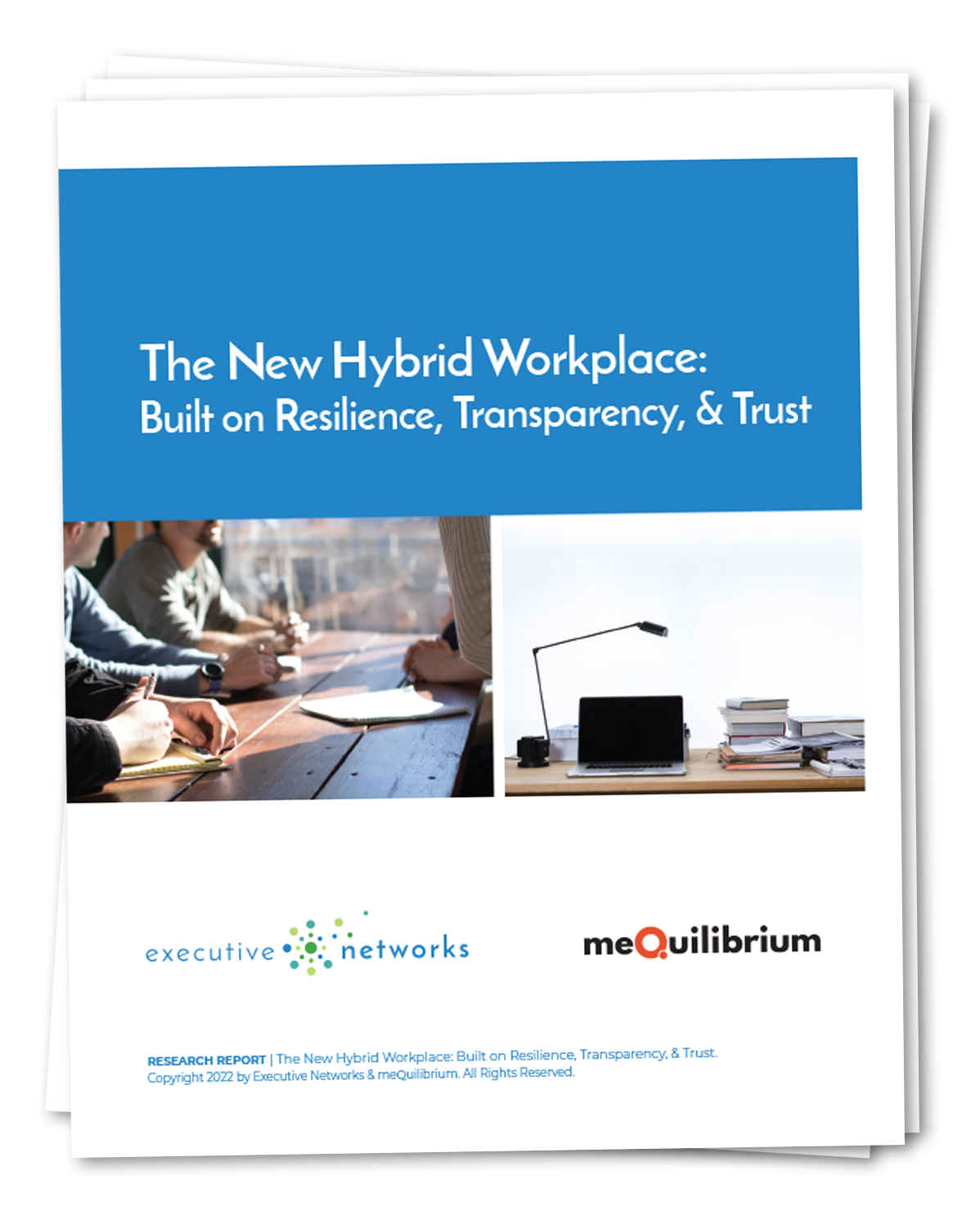There is a disconnect between leaders’ and employee perceptions about the hybrid workplace and it could be hurting your people—and your business. A lack of clear guidelines about hybrid work is resulting in greater uncertainty and anxiety among employees. Not only does this put your hybrid and return to site plans at risk, but it’s costly and disruptive.
Here are some questions organizations should be asking themselves: Do you have clear guidelines? How can you do this with resilience, transparency and trust? Are you doing enough to ensure all employees feel equally supported?
The expectations between employers and employees around hybrid work are telling.
In our recent survey conducted in partnership with Executive Networks, at organizations that lack a clear roadmap for hybrid work, employees are more likely to struggle with engagement. And while 66% of Leaders say their organization has clearly defined and communicated hybrid work guidelines, only 47% of employees agree. This communication mismatch must be addressed for organizations to move forward with a successful transition to hybrid.
Organizations that fail to provide adequate support for all work environments risk damaging employee morale and retention. But what does adequate support look like? Overall, survey participants ranked positivity as the most important attribute for adapting to change in the workplace, followed by stress management, focus, empathy, and emotional intelligence.
Remote/hybrid workers who perceive they’re receiving less support than on-site employees struggle more with burnout and lower morale. Dissatisfaction leads to a higher likelihood of resignation, with 23% saying they’re likely to look for another job in the next 12 months compared to 12% of other respondents.
KEY FINDINGS SHOW IT’S NOT ALL BAD NEWS
While the study found that a mismatch between employees’ actual and desired work environments threatens their well-being, it also found that clear hybrid guidelines have a big impact on employee perceptions of support and the ability to adapt to change. The study identifies steps that organizations can take to create a more resilient workforce, one that is able to embrace the realities of the new hybrid workplace.
There are actions you can take to move forward.
Address the disconnect head-on.
Understanding the conflicting perceptions of optimal work environments and promoting advancement in all settings is critical. Engaging in deep listening with all employee segments to understand preferences for their optimal work environment can create more understanding and help to reach a consensus on which job roles are ripe for remote, hybrid, and fully on-site work.
Set guardrails for hybrid work.
To enable greater resilience among employees in hybrid work environments, leaders need to create a clear roadmap defining expectations, tailored to their organization’s particular culture. For optimal success, leaders should go further by modelling desired behavior for their employees such as empathy, a focal point of workforce resilience.
Employer support means the world.
Employees assigned to their preferred work situation have a more positive employee experience. They are more likely to feel connected to their company’s mission and vision (80%) vs. those not working in their preferred environment (68%) and to feel positive emotions at work (77% vs. 64%).
Actions leaders can take to mitigate this include elevating well-being as a core component of employee experience, and being creative in exploring tech-enabled well-being tools for all employees, regardless of where they work.
Dealing with ambiguity and uncertainty in different work environments requires leaders to lead with empathy, gratitude, and kindness, while building both their own resilience and the resilience of their teams. For more tips on establishing clear expectations for the hybrid workplace, as well as how to lead employees who work fully in-person, remote, or in a hybrid environment, download The New Hybrid Workplace Build on Resilience, Transparency & Trust ebook.
meQuilibrium is here to help. Reach out to a Workforce Resilience specialist today.

